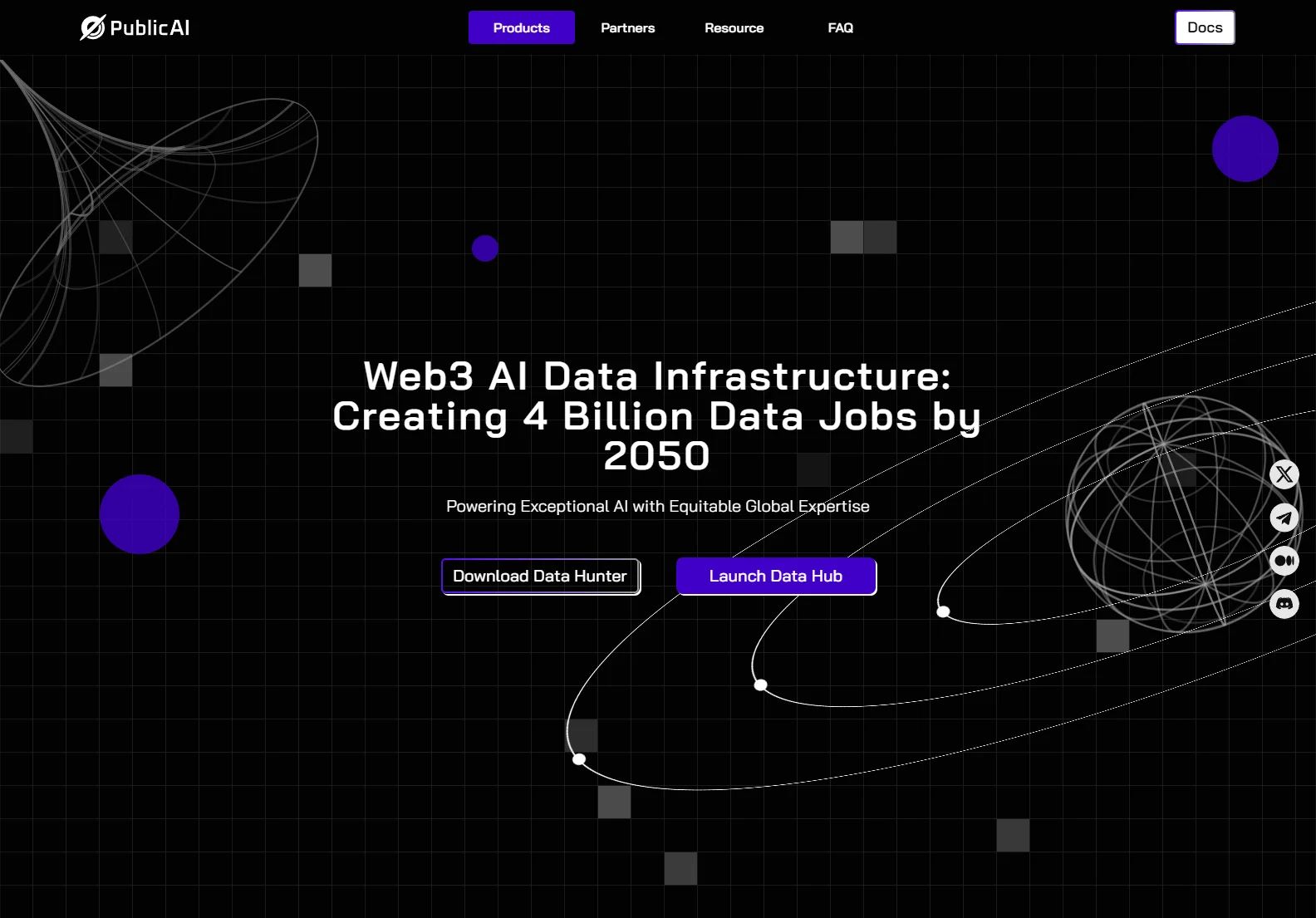PublicAI: Revolutionizing Web3 AI Data Infrastructure
PublicAI is at the forefront of the AI revolution, offering a comprehensive Web3 AI Data Infrastructure. This platform is not just another tool; it's a game-changer with a mission to monetize all human knowledge to train Public AGI.
Overview
PublicAI brings together a team of world-class AI scientists, IEEE Fellows, professors, and PhDs. Their goal is to create 4 billion data jobs by 2050, a vision that showcases the platform's potential to make a significant impact on the global workforce.
Core Features
One of the standout features of PublicAI is its ability to provide access to the best talent from around the world. By eliminating the barriers of international banking and central platforms, it opens up a world of possibilities for businesses and individuals alike.
The quality control measures in place ensure smooth dataset delivery. Using on-chain staking systems, access tests, and SBT, PublicAI verifies the capabilities of Validators in specialized data annotation fields, guaranteeing the highest quality data.
Cost efficiency is another key aspect of PublicAI. Its on-chain staking and liability mechanisms reduce work and cost redundancy, making it a more viable option compared to traditional platforms.
PublicAI also offers the world's largest decentralized platform for collecting and annotating multi-modal data. This includes text, audio, video, and mapping data, providing a comprehensive solution for data collection and annotation needs.
Basic Usage
Data collection is made easy with PublicAI. AI Builders can source and curate high-quality content from social media, and users can contribute social media and GPT conversation content using the Data Hunter plugin.
The data labeling process is streamlined through an AI-assisted workflow. AI Assistants pre-label data, which is then thoroughly verified by AI Validators, ensuring high-quality, cost-effective data labeling.
Model evaluation is also a crucial part of the PublicAI ecosystem. Users can analyze their AI models' performance, explore model metrics, identify weaknesses, and evaluate models using scenario tests.
How It Works
The PublicAI Consensus RLHF Loss Function and Reward Function ensure a fair and efficient system. Requesters have tasks that need to be completed, and Workers on the PublicAI Marketplace are eager to earn money and work on interesting tasks.
FAQs
Data security is a top priority for PublicAI. The platform has implemented multiple layers of security, including encryption of data in transit and at rest, as well as access controls to limit data access. Strict policies and procedures are also in place to ensure the best practices in data security and privacy.
Pricing on PublicAI is flexible. Users can choose the PublicAI marketplace, which offers a free tier with a complimentary amount of annotation and a pay-as-you-go option for anything exceeding that amount. For additional features and enterprise capabilities, users can upgrade to PublicAI Pro for Enterprise.
PublicAI supports various data types, including general image annotation, 2D semantic segmentation, text collection, document transcription, named entity recognition, video playback annotation, LIDAR (3D) annotation, and more.
PublicAI has several advantages over other crowdsourcing task platforms. It eliminates price differentials, reducing task costs. Its WEB3 reputation system with incentives and penalties promotes virtuous growth. Additionally, the crypto payment channel solves international labor settlement obstacles, welcoming global members.
The PublicAI ecosystem includes various roles such as Task publishers, Workers, Job reviewers, Labeling guilds, Approvers, and Councils, providing opportunities for a diverse range of individuals to participate.
